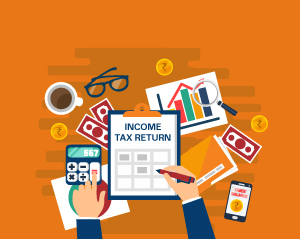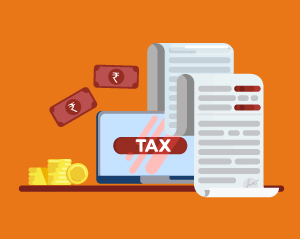The process of filing your income tax return involves one critical step – e-verification. Without completing this step, your tax filing remains incomplete and invalid.
Let’s find out more about it and the various methods you can use for the e-verification of your income tax return.
What is Income Tax e-verification?
Income tax e-verification is the electronic process of verifying your income tax return after you have filed it. This step is mandatory and must be completed within the stipulated time frame. Otherwise, your tax return will be considered incomplete.
Understanding how to do the e-verification of your income tax return is crucial for ensuring that your return is successfully processed.
Why is e-verification important?
E-verification of your income tax return is essential for compliance with tax laws. It serves as an authentication of the information you have provided in your tax return, including your income, investments and identity details.
This step verifies that your return is accurate, meets all legal requirements and helps avoid any potential issues later.
Methods of E-Verification
Below are the different methods you can opt for e-verification of your income tax return:
Aadhaar OTP
You can e-verify your income tax return using your Aadhaar number. In this method, a One-Time Password (OTP) also known as the Electronic Verification Code (EVC) is sent to the mobile number registered with your Aadhaar Card. This method can be used by the authorised signatory or representative assessee.
Net Banking
Another popular method is through net banking. Here, an EVC is generated through your bank's net banking portal. This code is then sent to the mobile number and email address registered with the income tax e-filing portal.
Electronic Verification Code (EVC) via Bank Account
You can also e-verify your return through your bank account. If you select this method, an EVC generated from your pre-validated and EVC-enabled bank account will be sent to the mobile number and email ID registered with the e-filing portal.
Electronic Verification Code (EVC) via Demat Account
If you have a demat account, you can use it to e-verify your tax return. In this method, an EVC generated from your pre-validated and EVC-enabled demat account will be sent to your registered mobile number and email ID.
If you wish to verify your return offline, you can use the following two methods:
Bank ATM
You can visit your nearest bank ATM to generate an EVC for income tax filing. All you need to do is simply swipe your debit card, enter your PIN, and select the option to generate an EVC for income tax filing. The EVC will be sent to your registered mobile number and email ID.
Offline verification (Sending ITR-V by Post)
If you prefer a completely offline method, you can print and send your income tax return verification form to the Centralised Processing Centre (CPC) of the Income Tax Department in Bangalore.
Steps to E-Verify Your Income Tax Return
Here’s how to do the e-verification of your income tax return:
Step 1
Visit the e-filing portal and log in with your user ID and password
Step 2
From the Dashboard, go to ‘Services’ and select ‘Generate EVC’
Step 3
On the next screen, choose your Permanent Account Number (PAN) or Tax Deduction and Collection Account Number (TAN) and click on ‘Continue’
Step 4
Select your preferred method for generating the EVC. You can choose from the following options:
- Aadhaar
- Net banking
- Bank account
- Demat account
- Bank ATM
- ITR-V by Post
Troubleshooting Common Issues
Income tax filers may experience some problems during the e-verification process. Below are some common issues, along with solutions that can help you overcome them:
Aadhaar Not Linked
To e-verify your return using Aadhaar OTP, your PAN must be updated with your Aadhaar card. Here’s how you can check the status of your PAN-Aadhaar linkage:
- Visit the income tax portal and find the ‘Quick Links’ section
- Click on ‘Link Aadhaar Status’
- Enter your PAN number and Aadhaar Card Number, then click on ‘View Link Aadhaar Status’
- Your Aadhaar linkage status will be displayed
If your Aadhaar Card is not linked with your PAN, you can request the linkage by paying a late fee of ₹ 1,000 on the income tax website.
Mobile Number Not Updated
If your mobile number is not updated with Aadhaar, you can follow these steps:
- Visit your nearest Aadhaar enrolment centre
- Fill out the Aadhaar update or correction form and mention your mobile number
- Complete the process by verifying your details through biometric authentication
If your mobile number is not updated with your bank, you will need to contact your bank directly.
Failed OTP Delivery
If you are not receiving the OTP, first make sure that your current mobile number is registered with your Aadhaar Card and linked to your bank or demat account. Many people do not update their contact details after changing numbers, so verifying that your new number is correctly registered is important.
If you still do not receive the OTP, check for any network issues or contact your service provider. If the issue persists, try generating the OTP again or consider using an alternative e-verification method.
Important Deadlines for e-verification of income tax return
It is crucial to complete the e-verification or submit the ITR-V within 30 days from the date of filing your income tax return. Failing to meet this deadline can result in your tax return being considered invalid.
People like you also read...








